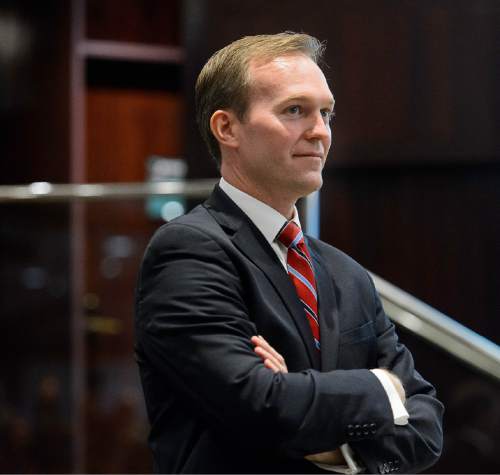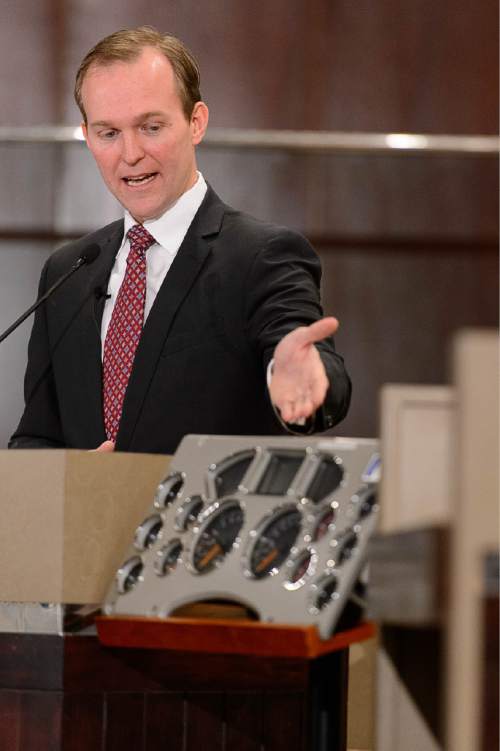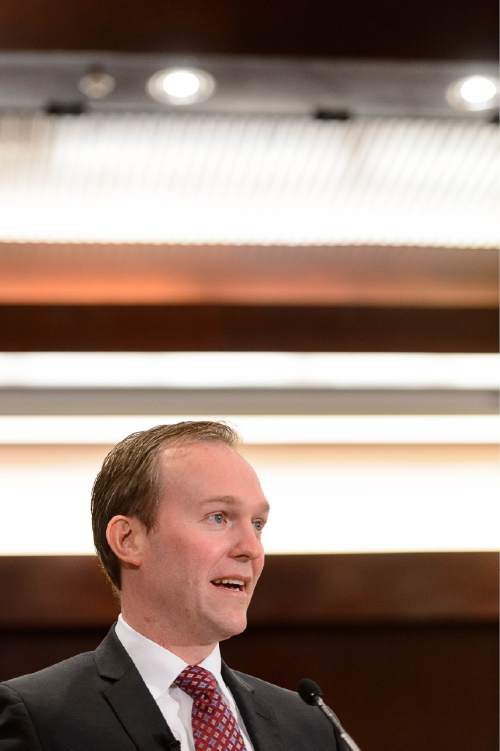This is an archived article that was published on sltrib.com in 2015, and information in the article may be outdated. It is provided only for personal research purposes and may not be reprinted.
In 1995, Salt Lake County voters approved a 20-year bond to build a new jail.
But when the debt is paid off in December, Mayor Ben McAdams and the County Council want to keep collecting the tax revenue to deal with a "broken" criminal and social justice system.
The average county taxpayer pays $2 a year for the bond, the mayor said. An extension would be subject to a "Truth in Taxation" public hearing this fall.
Along with Sheriff Jim Winder and District Attorney Sim Gill, McAdams secured general council support Tuesday for a plan to keep the tax levy from the jail bond in place and to use its proceeds, about $9.4 million annually, for a "reinvention" of the criminal justice system.
The goal is to get nonthreatening lawbreakers, often substance abusers or the mentally ill, into treatment programs and out of jail cells. Reducing the likelihood that many of them will keep returning to jail, the Democratic trio stressed, is the only way to keep the system from falling apart as the potential inmate pool expands in line with population growth.
"We'll lock up the people who need to be in jail and help the others to be productive members of society," said McAdams.
Added Winder: "If individuals come to our facility and walk out without the chance to get into treatment, the core of the system is broken."
McAdams' fix involves three prongs, details of which he promised to give the council in his 2016 budget presentation on Oct. 20. But, in general, he is proposing to use the $9.4 million as follows:
• About $6.5 million would go into escrow accounts to, down the line, repay private investors who put money into "Pay for Success" programs aimed at reducing recidivism and homelessness while improving early education of at-risk youth — if those programs have evidence of success.
• Another $3 million would be allocated to the sheriff's and district attorney's offices and the criminal justice advisory council to meet immediate needs and pursue initiatives to advance the goal.
• Remaining funds would be set aside for development of a Community Corrections Center, a sentencing alternative that will provide space for intensive programming, employment counseling and behavioral health services in a secure environment.
In a straw vote rather than a formal decision, the council adopted the proposal on an 8-1 vote that was not as resounding as the numbers indicate.
At least two other council members had reservations about the proposal, but, seeing that McAdams had the majority he needed, they voted aye rather than siding with Council Chairman Richard Snelgrove, who cast the lone nay.
"Let's call this what it is — it's a tax increase," Snelgrove said, contending there were too many uncertainties involving the plan for him to sign off, especially not knowing what impact the tax hike might have on someone living on a fixed income.
"If we're making data-driven decisions," he added, borrowing an oft-used McAdams phrase, "we need more information to make an intelligent decision."
Republican colleague Michael Jensen said voters approved the 1995 bond to build a capital project, and while he understands the value of treatment to keep people out of jail, the mayor's plan is calling for money to be moved from facilities to programming.
And in Jensen's mind, that is a significant difference, especially when prospects seem good that future population growth will require an expansion of the jail's capacity no matter the success of recidivism-reducing programs.
But McAdams' approach also had staunch supporters.
"This is certainly the right thing to do," said Councilman Max Burdick, a Republican.
"This is one of the more meaningful things we can do," said Democrat Jenny Wilson, fully convinced that the treatment regimen is the way to go.
Added fellow Democrat Arlyn Bradshaw: "It is not just a financially sound decision, but a moral obligation of this county and this council to lead the way. … My constituents would rather this $9.4 million go toward helping people than just housing people."







